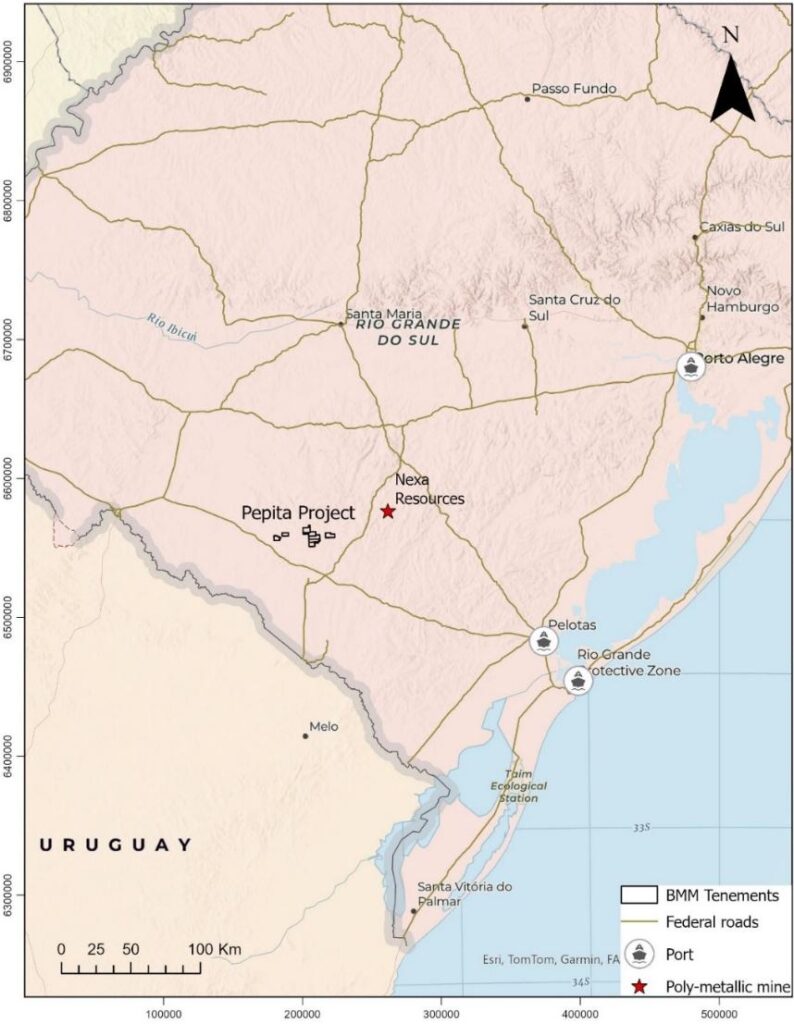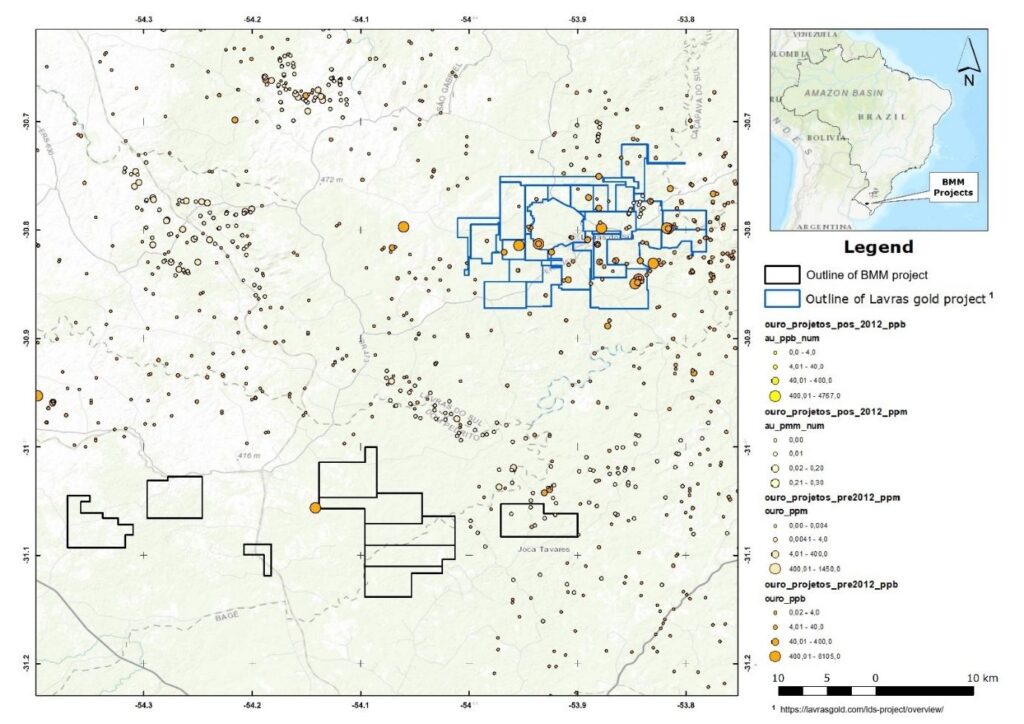
Pepita Project
Brazil
Summary
The Company is pleased to announce that it has applied for an exploration permit over a highly prospective area in southern Brazil. This strategic decision is based on a detailed review of eological, geochemical, and structural data, including government sampling data, indicating significant potential for gold mineralisation.
Location
The Pepita Project is located 20 km southwest of Lavras do Sul City, within a goldrich region with excellent infrastructure, including highway access, power supply, and proximity to industrial hubs like Pelotas (150 km) and Porto Alegre (300 km). The area offers a skilled mining workforce, a stable regulatory environment, and year-round exploration conditions, ensuring efficient logistics and cost-effective operations.

Geological Settings
The Santo Afonso Suite is part of the Western Domain of the Sul-Riograndense Shield, associated with the Neoproterozoic Brasiliano Cycle. It predominantly comprises high-potassium calc-alkaline granitic rocks and forms part of a complex tectonic framework involving the Vila Nova Belt and Dom Feliciano Belt. This region reflects dynamic crustal reworking during continental collision and subsequent post- collisional extensional events.
The suite intrudes the Santa Maria Chico Granulitic Complex, a Paleoproterozoic terrane consisting of granulite-facies rocks such as quartz-feldspathic gneisses, mafic granulites, and ultramafic rocks. The Santa Maria Chico Complex is the basement over which Neoproterozoic magmatism occurred, contributing enriched crustal material for the younger granitoid.
Gold mineralisation within the region is closely associated with significant structural controls, including shear zones and fault systems. These structures serve as key fluid flow pathways and critical channels for hydrothermal processes responsible for gold deposition.
The region also hosts multiple anomalous zones of gold mineralisation identified through regional sampling program by Brazilian Geological Survey. These zones align with key structural features, highlighting potential areas for further exploration and prospecting.


